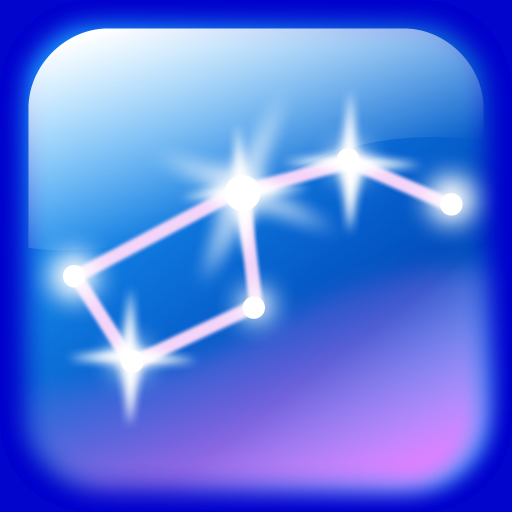
Review: Star Walk - Hold The Universe In Your Hands
November 22, 2010
Overview
The near-flawless culmination of hardware and software is probably the biggest contributing factor of the success of iOS devices. The touchscreen, wifi, GPS, camera, accelerometer, Bluetooth and now gyroscope can all be integrated into applications either by 3rd party developers or Apple themselves. Star Walk for iPad proves this all over again. Designed for consumer and professional alike, this virtual planetarium utilizes the accelerometer to create an interesting semi-augmented reality feel. It has even been featured on sample units in Apple Stores, which is often a good indicator of a quality application. But as you will see, before considering Star Walk, you need to ask yourself how often you really observe the heavens.
Features
There are near a googol stars in the depths of outer space, not counting Hoth or Vulcan. (Don't know what a googol is? Google it.) Somehow, Vito Technology managed to get away with only including 9000 or so of these. Don't get too disappointed though, because you won't even find most of them. I will also add that satellites are included amongst the glitter of the actual planetary beings. To understand how Star Walk works is to think of Google Earth, inverted. Instead of looking at a sphere, you are within a sphere and can look in any direction. It really is just like looking at the stars at night, except the Earth is perfectly transparent. You can navigate in two ways; either use the accelerometer to move the iPad in all directions (semi-augmented reality), or you can swipe and drag. Pinch to zoom is available, gratefully, for either option. If you want more information about a given heavenly object, you can tap on it and push the information icon in the top left. This will give you some super nerdy statistical information such as coordinates, but for the rest of us, Wikipedia is on hand to assist. Note that Wikipedia won't help you with AR364, just the major stars and planets. There are also some treasures you wouldn't expect such as a picture gallery of the latest satellite imagery of space, bookmarks and a time-lapse option. This latter feature is especially bum kicking as you can file through past or future years and watch as the stars move past you in their specific routes.
Constellations are an integrated part of Star Walk. If you center over a certain one, the image of what it is supposed to be appears and the comprising stars are highlighted. None of these star patterns look remotely like what they are supposed to be, but I guess that is more Galileo's fault than Vito Technology Inc.
There are also some treasures you wouldn't expect such as a picture gallery of the latest satellite imagery of space, bookmarks and a time-lapse option. This latter feature is especially bum kicking as you can file through past or future years and watch as the stars move past you in their specific routes.
Constellations are an integrated part of Star Walk. If you center over a certain one, the image of what it is supposed to be appears and the comprising stars are highlighted. None of these star patterns look remotely like what they are supposed to be, but I guess that is more Galileo's fault than Vito Technology Inc.
 The Good
Star Walk excels at presentation. It runs smoothly without glitch to efficiently explore the universe. There is especially extra attention paid to detail in the little things. Watch as an occasional shooting star zooms past the screen or the moon slowly rotate when fully zoomed in. The start up screen is also handy as it shows you current positions of the moon and major planets along with the sunrise and sunset times.
If there was ever an app for showing and telling, this is it. Don't be surprised if you quickly find yourself itching to show a friend. It is cheaper than a planetarium.
The Bad
While Star Walk performs smoothly, it often lacks precision. When looking at the true sky, it is nearly impossible to match up the stars you are looking at on the screen with the stars in the sky. It will put you in the general area, but until it has true augmented reality labeling via camera. So no, this probably won't help you find Venus. Sorry.
It also suffers when you try and look up (imagine holding it above your head) . This is likely an accelerometer limitation more than software, but it is annoying nevertheless.
The Good
Star Walk excels at presentation. It runs smoothly without glitch to efficiently explore the universe. There is especially extra attention paid to detail in the little things. Watch as an occasional shooting star zooms past the screen or the moon slowly rotate when fully zoomed in. The start up screen is also handy as it shows you current positions of the moon and major planets along with the sunrise and sunset times.
If there was ever an app for showing and telling, this is it. Don't be surprised if you quickly find yourself itching to show a friend. It is cheaper than a planetarium.
The Bad
While Star Walk performs smoothly, it often lacks precision. When looking at the true sky, it is nearly impossible to match up the stars you are looking at on the screen with the stars in the sky. It will put you in the general area, but until it has true augmented reality labeling via camera. So no, this probably won't help you find Venus. Sorry.
It also suffers when you try and look up (imagine holding it above your head) . This is likely an accelerometer limitation more than software, but it is annoying nevertheless. Star Walk also didn't convince me that I need it. For some, especially star gazers and outdoor fanatics, this app will be the best thing since capacitive screens. But for many others, the lack of replayability will show through, and you will be as frustrated as when Pluto lost it's planet-hood. It turns out that there really aren't that many times when you want to know where Jupiter was in relation to Proxima Centari April of 2008.
Star Walk also didn't convince me that I need it. For some, especially star gazers and outdoor fanatics, this app will be the best thing since capacitive screens. But for many others, the lack of replayability will show through, and you will be as frustrated as when Pluto lost it's planet-hood. It turns out that there really aren't that many times when you want to know where Jupiter was in relation to Proxima Centari April of 2008.


